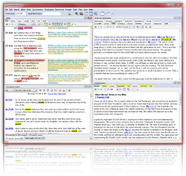Jacob of Nisibus
Jacob of Nisibus (often surnamed Jacob the Great), the instructor of Ephraem the Syrian, and a relative of Gregory the illuminator, flourished as bishop of Nisibis (Zoba) in the first half of the 4th century. The little that is known of him makes him out to have been a man "distinguished for ascetic holiness and for miraculous works," clothed, of course, like many of the early characters, in such a mythical dress that the character is often placed in a most ridiculous light (comp. Stanley, Eastern Church, p. 193). In his early life he "spent many years as a hermit in forests and caves, and lived like a wild beast on roots and leaves," clothed in a rough goat's-hair cloak; and this dress and mode of life he is said to have continued even after he became bishop of Nisibis. That he enjoyed the confidence and esteem of his contemporaries is evinced by the fact that he was a member of the Council of Nicaea (Assemani, Bibl. Or. 1, 169; 3, 587), and by the distinction which he received at the hand of the emperor, who called him one of the three pillars of the world (comp. Schaff, Ch. History, 3. 269). He died about 338. As a writer, Jacob of Nisibis hardly gained distinction; his authorship is even questioned by many. A number of works are attributed to him, but under his name are preserved only an Armenian translation of a letter to the bishops of Seleucia and eighteen sermons, of which a copy was prepared by direction of Assemani for the Vatican (Bibl. Or. 1, 557 sq., 632). An edition, with a Latin translation and notes, was prepared and published by cardinal Antonelli (1756, folio; Venice, 1765: Const. 1824). See, besides Schaff and Stanley, Neumann, Gesch. l. Armen. Lit. p. 18 sq.; Biographie Universelle, art. Jacques de Nisibe; Herzog, Real- Encyklopadie, 6, 396. (J. H.W.)

